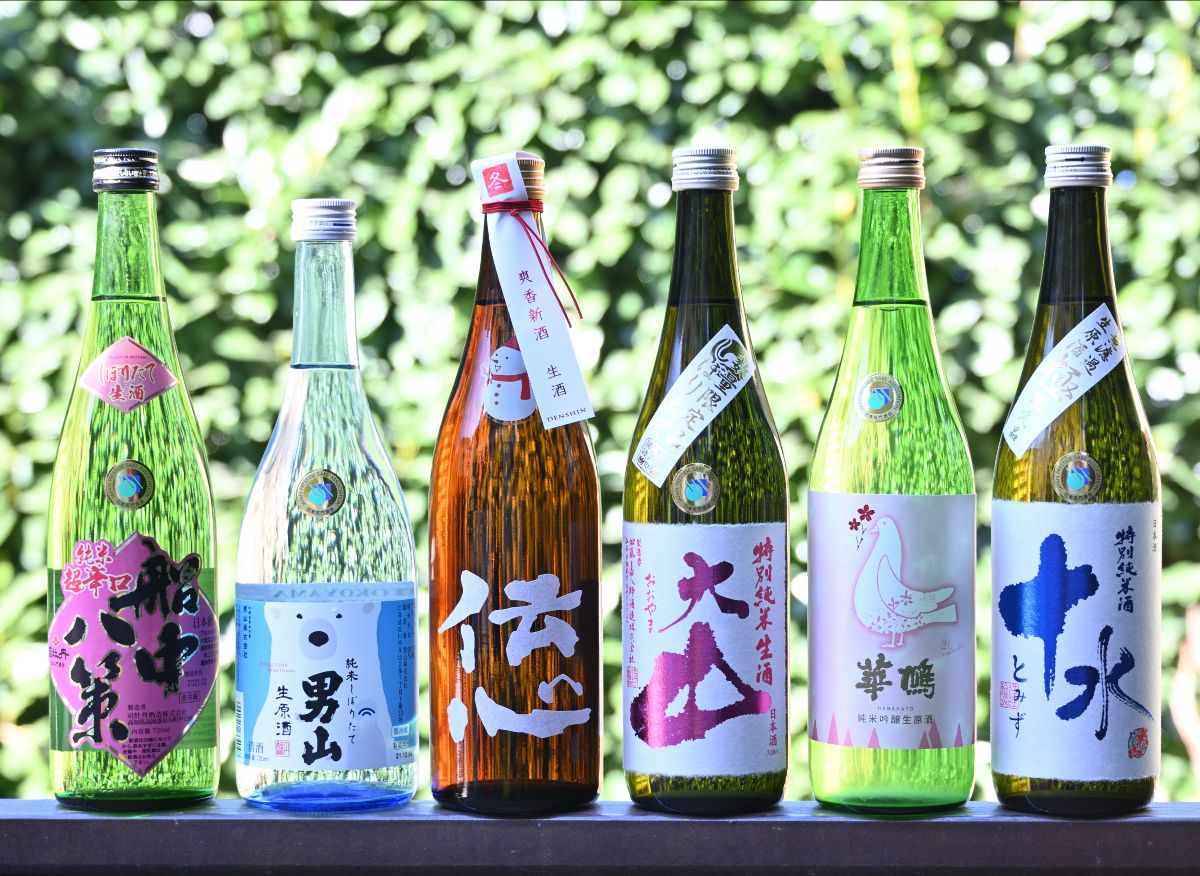
Sake review: Spring Namazake
Before I share my tasting notes on the fresh Nama, here are some words to decode the names of the sake.
純米 Junmai doesn’t use brewers alcohol to extract aromas.
特別 Tokubetsu means special. 60% or less rice left after polishing or a special rice.
吟醸 Ginjo has 60% or less of the rice left after polishing and uses a fruity ester producing yeast.
大吟醸 Daiginjo has 50% or less of the rice kernel remaining. This pure starch produces an elegant Sake.
あらばしり Arabashiri are the first drippings of a Sake batch. Lively and bold!
搾り立て Shiboritate is freshly squeezed and not rested before shipping.
無濾過 Muroka has not been charcoal filtered.
原酒 Genshu has not been diluted with water.
New Tasting Notes!
Tsukasabotan Senchu Hassaku Shiboritate Tokubetsu Junmai Namazake Genshu
New! Never imported before. Pours clear. The nose is timid with notes of raw rice and minerals. The pallet is at first rather plush and I’m wondering why this says very clearly Karakuchi or dry tasting on the front label. Within moments, however, comes a very driving dryness which is typical of the Koichi region. As we transition into the finish, it continues to dry the mouth asking for more salty, grilled foods. Please oblige it.
Otokoyama Shiboritate Kimoto Tokubetsu Junmai Namazake Genshu
The bears are back! Pours clear with a soft and inviting nose of bamboo. The palate is relatively rich. Blueberries! Fresh cream! This is so fun. While the palate is pillowy soft, the finish is crisp showing very nice green apple acidity. Made with locally grown Hokkaido Ginpu rice polished to 55%. Share this with friends who doubt Sake.
Denshin “Fuyu" Shiboritate Honjozo Namazake
Denshin has a following. Their Summer seasonal was a blockbuster, the fall was good and this is in between. It pours clear and colorless. The intense nose features fresh chestnut. The palate too is rich showing clove, nutmeg and malt. It finishes clean with a very nice crispness asking for more salty snacks. Enjoy with rich broth based soups as we shake off these cold days until Spring.
Ohyama Shiboritate Tokubetsu Junmai Namazake
New! Never imported before. Pours clear. While this is listed as a Tokubetsu Jummai, it drinks more like a Ginjo. They are using their typical Yamagata NF-KA yeast, the same one they use for their Ginjo and Daiginjo so you’ll see the similarities throughout. 60% polish too, so they could call this a Ginjo. Underselling, I guess. The inviting knows features fresh strawberries and a hint of cotton candy. The mouthfeel is rich but this is not sweet. Instead, there’s nice acidity and lingering rice flavors. Many different elements but they all work together.
Hanahato “Colombe" Hatsushibori Junmai Ginjo Namazake Genshu
Last year, I was the first to bring this to the US and it was a knockout so I ordered triple the cases. We only knew this tiny Hiroshima brewery in the US from their Kijoshu which is a very complex Sake reminiscent of very old PX Sherry. This, though, is completely different. Hatsushibori is the first Sake made every year.
Pours clear with a savory chestnut nose. The palate is absolutely perfect and so well balanced. We don’t get big Ginjo flavors, instead more a green grape juiciness transitioning into a crisp and clean finish which makes you want more. You should buy two. I’ll see if I can get T-shirts made. 55% polish on Okayama Hattannishiki.
Ohyama “Tomizu: 10 Water" Tokubetsu Junmai Muroka Namazake Genshu
New! Never imported before. This is a very unique, ancient style that only this brewery has revived. The recipe uses 10 Koku of water instead of 12 Koku (essentially equal to using 20% more rice) resulting in a thick and juicy sake with deep and complex aroma of fruits and grain. Pours slightly yellow. The nose is very Koji rich with some toasted peanut and roasted Chestnut. The palate is honeyed. I get these wonderful flavors of milk chocolate covered nougat, like some secret Austrian candy bar. Drink this with steaks and a hunter sauce or miso creamed kale.




